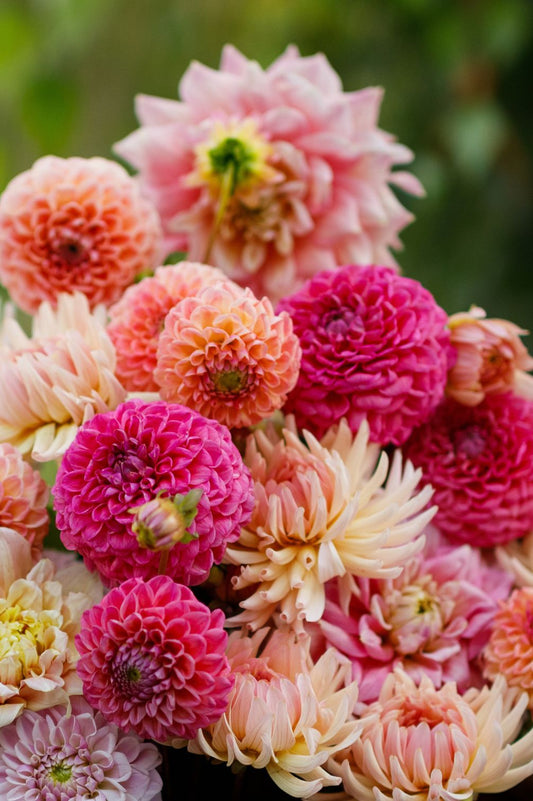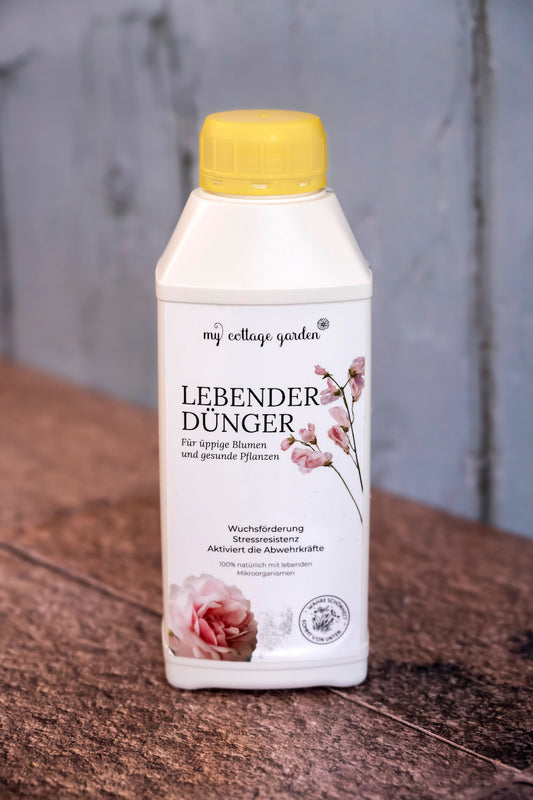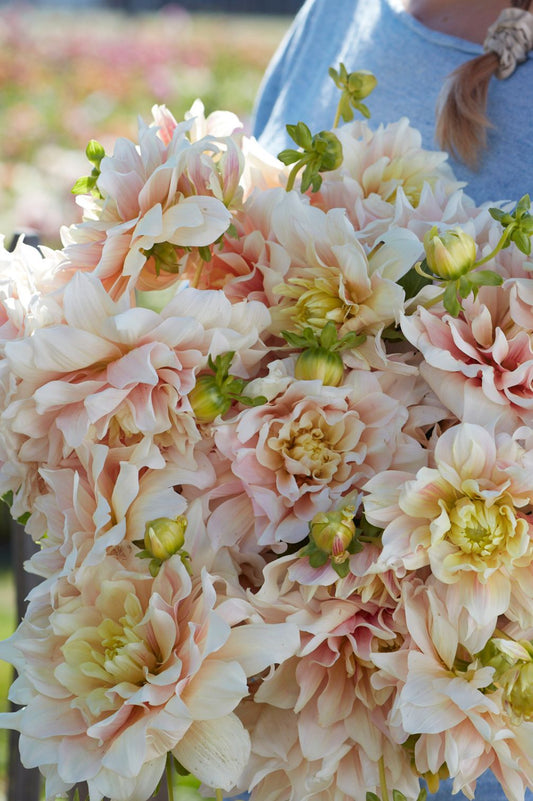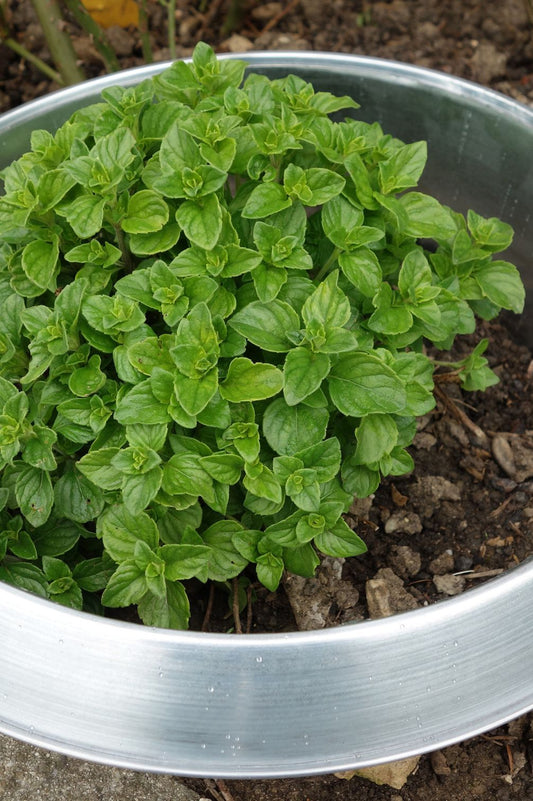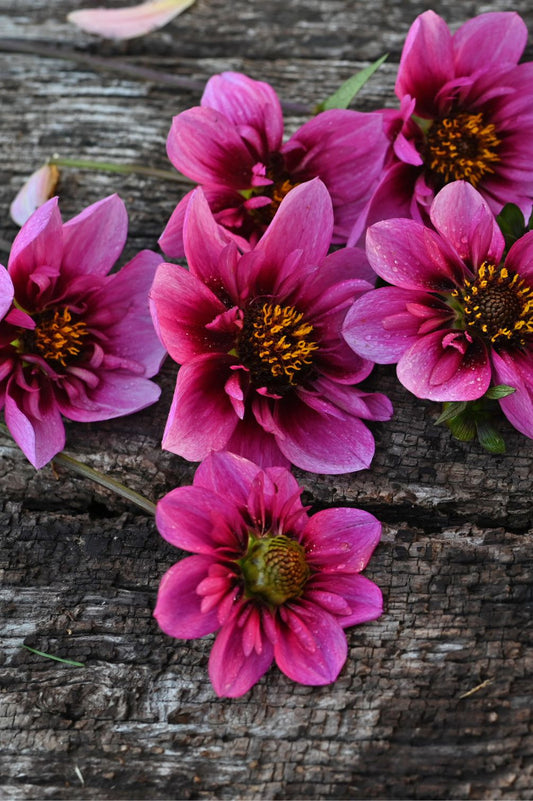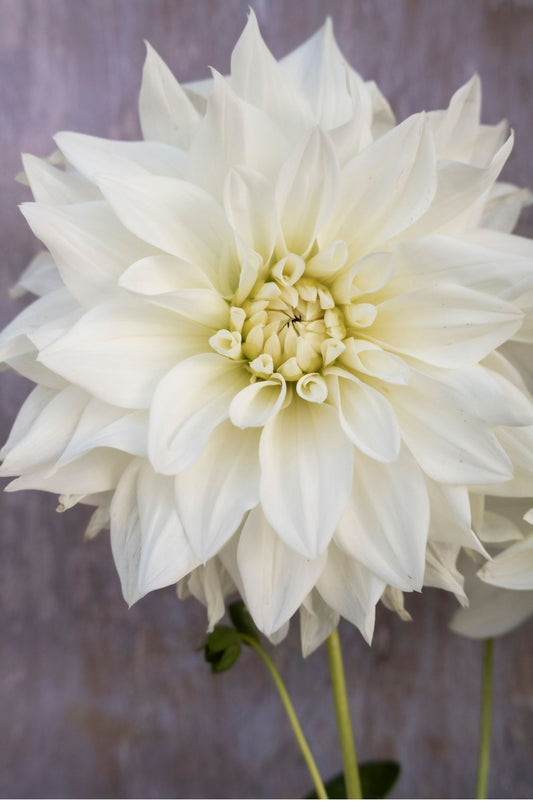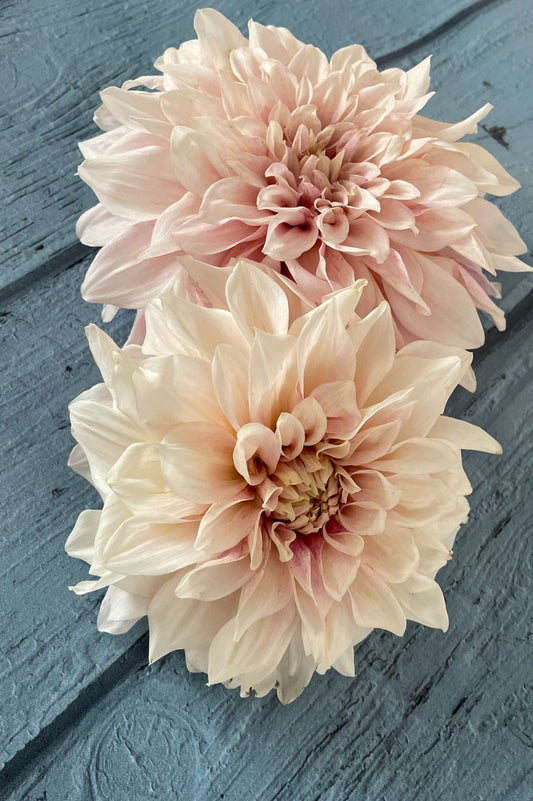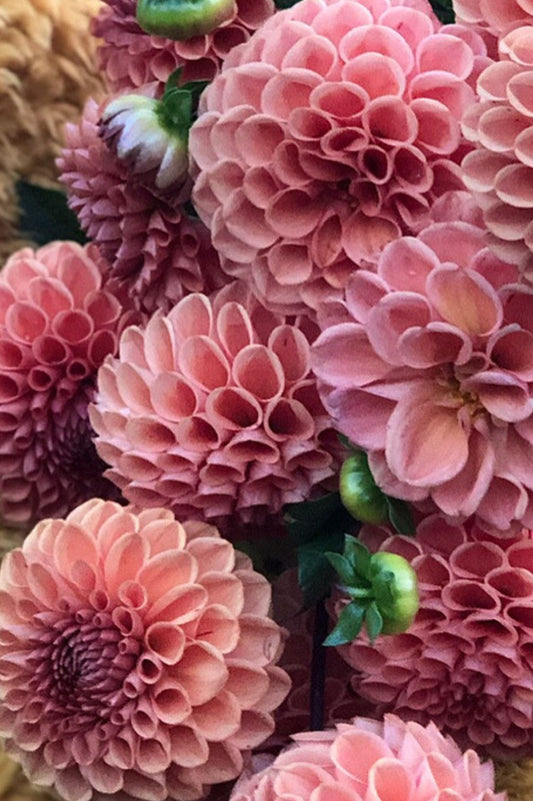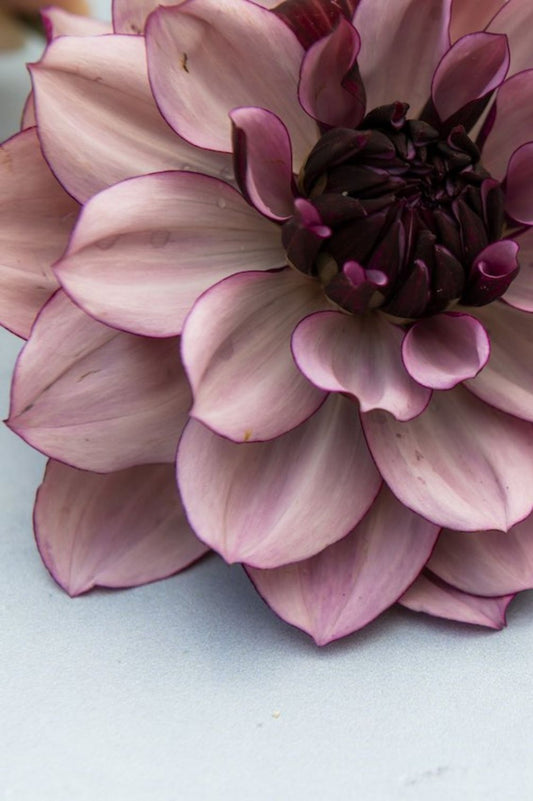11 TIPS FOR A MAGNIFICENT DAHLIA SUMMER
Dahlias are one of the most colorful and wonderful flowers that will brighten up your garden, patio or balcony.
What you absolutely need to know
so that nothing stands in the way of your dahlia summer.
(If you're new to dahlias or just starting out, I recommend reading my more detailed blog post on dahlias first. I've linked it HERE .)

1. THE MORE SUN = THE MORE FLOWERS
The equation is quite simple. The dahlia is a sun worshipper and produces more flowers the sunnier it is. While it tolerates partial shade, it won't bloom as profusely.

Dahlia Café au Lait
2. DON'T START TOO EARLY
I know the terrible impatience. You just want to get started right away. I've often given in, started the dahlias early in March, and then bitterly regretted it.
When, in April, fairly large plants already want to be in the sun during the day, I have to drag them out into the garden, into the house, out into the garden, and into the house day in and day out. Therefore: Don't start pre-growing too early.

Dahlia Totally Tangerine
3. WATERING BEFORE PLANTING?
Opinions differ on the topic of "watering dahlia tubers before planting." There's a risk that the waterlogged tuber will rot . If you're growing them indoors, you can water your dahlia tubers beforehand. Then plant them in dry soil and water them when the first green shoots emerge. If your tubers are dry and shriveled, they'll benefit from being watered for a few hours before planting.
If you want to plant them directly in the garden, the soil is usually quite moist at this time of year. I wouldn't water them in that case.

Dahlia Labyrinth
4. ADVANTAGE BY PREPARING
If you want an even longer bloom , you should start your dahlias early. Depending on the variety, they will bloom from June until the first frost. To do this, plant the tubers in pots indoors (or in a frost-free greenhouse).
Apart from the fact that they then bloom earlier and for longer, the already larger plants have a decisive advantage and thus better chances against the voracity of snails.

Dahlia Cream of Cassis
5. SUPPORTS
Since many varieties can grow quite tall and large, you should support or tie them down. It's best to stick a stake into the soil right when planting , so you don't risk accidentally skewering the tuber later.

Dahlia Break Out
6. Tweezing
I recommend pinching your dahlias. You'll be rewarded with significantly more blooms, albeit a little later. Once the shoots have reached a height of 20–30 cm, cut the main stem just above a pair of leaves with sharp scissors or a good knife. This takes a bit of effort, but it encourages the dahlias below the cut to form more shoots and branch out. The dahlia will also grow more vigorously, and the flower stems will also develop more sturdily.

7. FERTILIZE
If you add plenty of compost or other fertilizer to the soil before planting, the dahlias should have sufficient nutrients available throughout the summer, as organic fertilizer decomposes slowly. For nutrient-poor soils, you can occasionally add a little fertilizer (mineral fertilizer is always a second choice for me, as it's not good for the soil in the long run) to the watering. Stop fertilizing from (early) fall onwards so the plants can break down the nutrients and the tubers can ripen.
Avoid fertilizers with too much nitrogen, otherwise you will get more leaves than flowers.
If you grow your dahlias exclusively in pots, you can treat them more often with some fertilizer.

Dahlia Burlesca
8. SNAILS
Unfortunately, dahlias are at the top of our slimy garden inhabitants' menu. They can wipe out newly emerging dahlias in just one night.
Therefore, they absolutely need to be protected . I wrap untreated sheep's wool around the stems of my freshly planted dahlias. A nice side effect is that the wool makes an excellent fertilizer. Traditional slug collars also do a good job, keeping the voracious creatures away at least until the plant is large and strong enough. In an emergency, you can unfortunately also use slug pellets – just make sure they contain ferric phosphate, which is harmless to other animals.
And indeed, I have observed that when the plants are larger, the snails also lose interest in them.
If you have dahlias in a pot, I recommend coating the pot with Schnexagon , then they will be well protected.
8. SNAILS
Unfortunately, dahlias are at the top of our slimy garden inhabitants' menu. They can wipe out newly emerging dahlias in just one night.
Therefore, they absolutely need to be protected . I wrap untreated sheep's wool around the stems of my freshly planted dahlias. A nice side effect is that the wool makes an excellent fertilizer. Traditional slug collars also do a good job, keeping the voracious creatures away at least until the plant is large and strong enough. In an emergency, you can unfortunately also use slug pellets – just make sure they contain ferric phosphate, which is harmless to other animals.
And indeed, I have observed that when the plants are larger, the snails also lose interest in them.
If you have dahlias in a pot, I recommend coating the pot with Schnexagon , then they will be well protected.

Dahlia Penhill Dark Monarch
9. DO NOT LET SEEDS SET
Very important for lush blooms: Remove dead flowers to prevent the flowers from setting seeds. Once they start producing seeds, the dahlia's reproductive duty is fulfilled and it will no longer produce flowers. That would be a shame. You can regularly cut flowers for your vase—go for it, your dahlias will reward you with a sea of blooms until late autumn.
To do this, cut the stem above a pair of leaves; two new shoots will then form on each side – and new flowers!

Dahlia Labyrinth Twotone
10. Divide tubers
You should divide your tubers regularly when they grow very large – this will ensure your dahlia continues to bloom prolifically . You'll also get more plants. The ideal time is from March onwards, when the tubers begin to sprout and have formed "buds" from their winter storage, from which the new shoots will grow.
If you have trouble seeing eyes, bring the dahlias into a warm place and let them grow for a few days.

Then simply pull the tubers apart or separate them from the mother tuber with a sharp knife. Very important: Make sure that each piece has at least one eye visible and that it has a neck and a tuber. If necessary, treat the cut area with charcoal. The dahlia should then be planted relatively soon.

11. DON'T BE AFRAID OF THE FIRST FROST
I'm always amazed when someone pulls their dahlias out of the ground at the end of September for fear of the first frost. That's such a shame, because they could be missing weeks of blooms. You can safely wait until the first frost hits. It won't harm your tubers. If your dahlias are brown and blackish in the morning, then it's time. But even then, you still have a few days.

Dahlia Cornel Brons
And because I love dahlias so much, I dedicated an entire BOOK to them .
If you want to know more about her:

Photos: Janina Laszlo, Syl Gervais, Michaela Eriksson, Seila Malo


